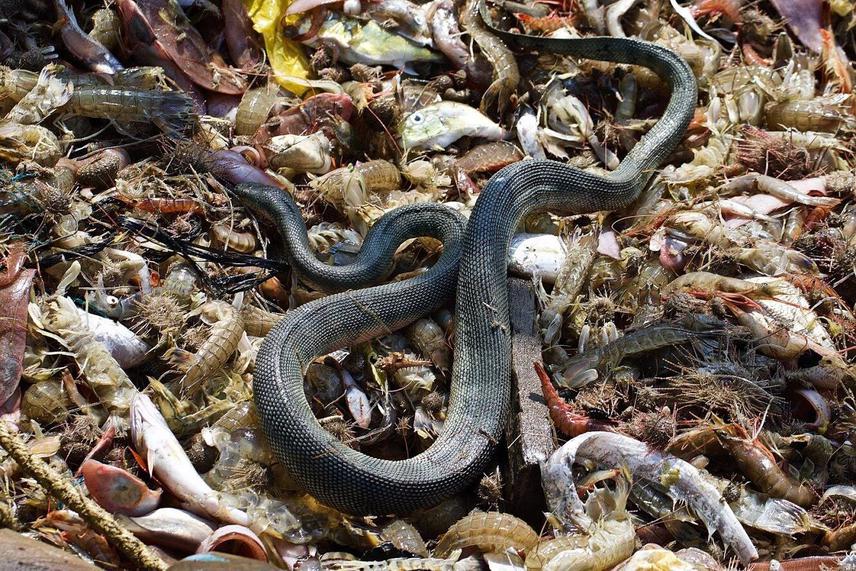Trisha Gupta
Our project will span from January 2018 to January 2019 during which time we hope accomplish the following objectives:
a. To determine differences in sea snake diet with varying degrees of fishing pressure.
b. To determine interspecific competition for dietary resources between H. schistosus and H. curtus.
c. To determine conspecific ontogenic and sexual differences in resource utilization

Sea snakes (Hydrophiinae) are a group of marine reptiles comprising of about 70 species worldwide that have adapted to a completely aquatic life. These animals are frequently caught as bycatch in tropical fishing nets, particularly in trawlers. Having no commercial value, sea snakes are usually discarded, however a large number are killed during the fishing process. Sea snakes are poorly studied in India and little is known on the impact of fishing pressure on their ecology. They range from dietary specialists to generalists and feed on a wide array of prey species, many of which are commercially fished. Extensive trawl fishing may therefore have an impact on sea snake diet and feeding, which has never been studied before. Our study aims to understand the effect of fishing pressure on the diet and feeding ecology of sea snake species found along the west coast of India.
The study spans across two sites, Malvan and Tambaldeg, with similar topography but vastly different degrees of fishing pressure. Malvan is a busy landing centre where large numbers of trawlers and mechanised gill net boats operate. Shore seines (known locally as ‘Rampan’) are also cast regularly. Tambaldeg, on the other hand, is a secluded village with minimal artisanal fisheries. We aim to draw a contrast between sea snake populations at these two locations. Sampling will be both fisheries dependent and independent, utilising beach transects to sample gill nets, on board sampling for trawlers and offshore boat transects in area where neither operate. We will use gut content analysis in conjunction with stable isotope analysis to characterise diets and trophic interactions of populations at both sites.
Conflict between fishermen and sea snakes is another cause of concern; there have been a number of cases of accidental envenomation in recent years and fishermen sometimes kill snakes caught in their nets out of fear. Through our work in we plan to assess the knowledge and perceptions of local fishermen towards these reptiles. We will conduct programmes with the fishermen on safety and bite management when dealing with snakes in nets. Furthermore, through outreach and awareness programmes with the local community we propose to establish sea snakes as indicators of healthy fish stocks and highlight their conservation importance.
Previous studies have indicated declines in sea snake populations in Australia and Vietnam, and there is some evidence for this in Indian waters as well. Our study will provide much needed insight into the response of sea snake ecology to fishing pressure and help initiate conservation strategies for these animals along the Indian coastline.
This work is conceptualised and conducted by a research team from Dakshin Foundation, Bangalore, composed of Chetan Rao, Shawn Dsouza and Trisha Gupta